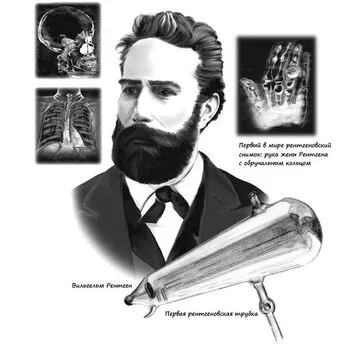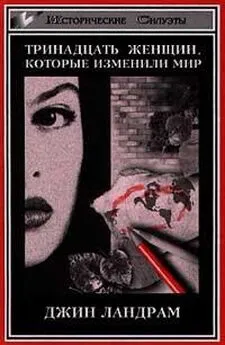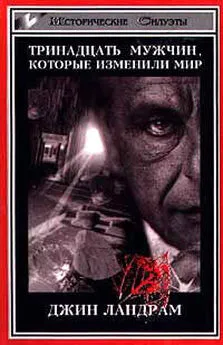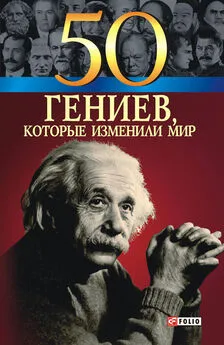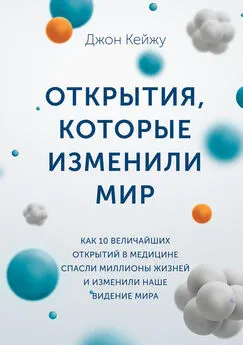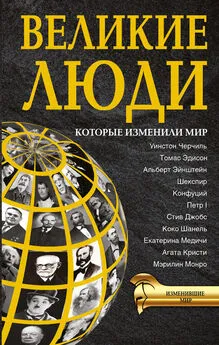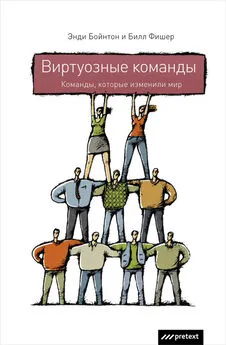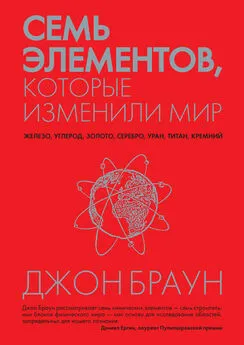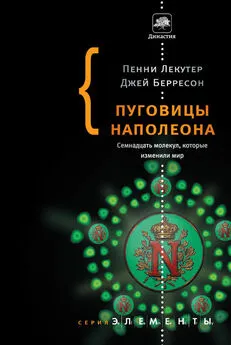Джон Кейжу - Открытия, которые изменили мир
- Название:Открытия, которые изменили мир
- Автор:
- Жанр:
- Издательство:Манн, Иванов и Фербер
- Год:2015
- ISBN:9785000578698
- Рейтинг:
- Избранное:Добавить в избранное
-
Отзывы:
-
Ваша оценка:
Джон Кейжу - Открытия, которые изменили мир краткое содержание
Открытия, которые изменили мир - читать онлайн бесплатно ознакомительный отрывок
Интервал:
Закладка:
Chain E. B. The chemical structure of the penicillins. Nobel Lecture, 1946. March 20 // http://nobelprize.org/nobel_prizes/medicine/laureates/1945/chain-lecture.html.
Chain E. B. Fleming’s contribution to the discovery of penicillin // Trends in Biochemical Sciences (TIBS), 1979. June. Pp. 143–144.
Chater K. F. Streptomyces inside-out: A new perspective on the bacteria that provide us with antibiotics // Philosophical Transactions of the Royal Society, 2006. Vol. 361. Pp. 761–768.
Davies J. Microbes have the last word. European Molecular Biology Organization // EMBO Reports, 2007. Vol. 8. No. 7. Pp. 616–621.
Diggins F. W. E. The true history of the discovery of penicillin, with refutation of the misinformation in the literature // British Journal of Biomedical Science, 1999. Vol. 56. No. 2. Pp. 83–93.
Fleming A. The discovery of penicillin // British Medical Bulletin, 1944. Vol. 2. No. 1. Pp. 4–5.
Fleming A. Penicillin. Nobel Lecture, December 11, 1945 // http://nobelprize.org/nobel_prizes/medicine/laureates/1945/fleming-lecture.html.
Fleming A. Penicillin: Its Practical Application. Philadelphia: The Blakiston Company, 1946.
Fraser-Moodie W. Struggle against infection // Proceedings of the Royal Society of Medicine 1971. Vol. 64, January. Pp. 87–94.
Fridkin S. K., Hagerman J. C., Morrison M. et al. Methicillin-resistant Staphylococcus aureus disease in three communities // The New England Journal of Medicine, 2005. Vol. 352, April 7. Pp. 1436–1444.
Grossman C. M. The first use of penicillin in the United States // Annals of Internal Medicine, 2008. Vol. 149. Pp. 135–136.
Hare R. New light on the history of penicillin // Medical History, 1982. Vol. 26. Pp. 1–24.
Henderson J. W. The yellow brick road to penicillin: A story of serendipity // Mayo Clinic Proceedings, 1997. Vol. 72. Pp. 683–687.
Hobby G. L. Microbiology in relation to antibiotics // Journal of the History of Medicine and Allied Sciences, 1951. Vol. VI, Summer. Pp. 369–387.
Hopwood D. A. Forty years of genetics with Streptomyces: From in vivo through in vitro to in silico // Microbiology, 1999. Vol. 145. Pp. 2183–2202.
Kingston W. Antibiotics, invention, and innovation // Research Policy, 2000. Vol. 29. No. 6, June. Pp. 679–710.
Moellering R. C., Jr. Past, present, and future of antimicrobial agents // The American Journal of Medicine, 1995. Vol. 99 (suppl 6A), December 29. Pp. 11S-18S.
Murray J. F. A century of tuberculosis // American Journal of Respiratory and Critical Care Medicine, 2004. Vol. 169. Pp. 1181–1186.
Mycek M. J., Harvey R. A., Champe P. C. et al., eds. Lippincott’s Illustrated Reviews: Pharmacology, 2nd ed. Philadelphia: Lippincott Williams & Wilkins, 2000.
Naseri I., Jerris R. C., Sobol S. E. Nationwide trends in pediatric Staphylococcus aureus head and neck infections // Archives of Otolaryngology — Head & Neck Surgery, 2009. Vol. 135. No. 1. January. Pp. 14–16.
Nobelprize.org. Gerhard Domagk: The Nobel Prize in Physiology or Medicine, 1939 // http://nobelprize.org/nobel_prizes/medicine/laureates/1939/domagk-bio.html.
Nobelprize.org. Selman A. Waksman: The Nobel Prize in Physiology or Medicine, 1952 // http://nobelprize.org/nobel_prizes/medicine/laureates/1952/waksman-bio.html.
Nobelprize.org. Sir Albert Fleming, Ernst Boris Chain, and Sir Howard Walter Florey: The Nobel Prize in Physiology or Medicine, 1945 // http://nobelprize.org/nobel_prizes/medicine/laureates/1945/index.html.
Noble W. C. The sulphonamides: An early British perspective // Journal of Antimicrobial Chemotherapy, 1986. Vol. 17. Pp. 690–693.
Otten H. Domagk and the development of the sulphonamides // Journal of Antimicrobial Chemotherapy, 1986. Vol. 17. Pp. 689–690.
Peláez F. The historical delivery of antibiotics from microbial natural products — Can history repeat? // Biochemical Pharmacology, 2006. Vol. 71. No. 7, March 30. Pp. 981–990.
Penicillin in action // The Lancet, 1941. August. Pp. 191–192.
Penicillin in America // The Lancet, 1943. July. P. 106.
Saxon W. Anne Miller, 90, first patient who was saved by penicillin // The New York Times, 1999. June 9.
Wainwright M., Swan H. T. C. G. Paine and the earliest surviving clinical records of penicillin therapy // Medical History, 1986. Vol. 30. Pp. 42–56.
Wainwright M. The history of the therapeutic use of crude penicillin // Medical History, 1987. Vol. 31. Pp. 41–50.
Wainwright M. Moulds in ancient and more recent medicine, 2006. January 20 // http://www.davidmoore.org.uk/Assets/fungi4schools/Reprints/Mycologist_articles/Post-16/Medical/V03pp021-023folk_medicine.pdf.
Waksman S. A. Streptomycin: Background, isolation, properties, and utilization. Nobel Lecture, 1952. December 12 // http://nobelprize.org/nobel_prizes/medicine/laureates/1952/waksman-lecture.html.
Waksman S., Schullian D. M., eds. History of the word «antibiotic» // Journal of the History of Medicine and Allied Sciences, 1973. July. Pp. 284–286.
Watve M. G., Tickoo R., Jog M. M., Bhole B. D. How many antibiotics are produced by the genus Streptomyces? // Archives of Microbiology, 2001. Vol. 176. Pp. 386–390.
Wennergren G. One sometimes finds what one is not looking for (Sir Alexander Fleming): The most important medical discovery of the 20th century // Acta Paediatrica, 2007. Vol. 96. Pp. 141–144.
Wiedemann H. R. Gerhard Domagk // European Journal of Pediatric, 1990. Vol. 149. P. 379.
Williams D. E. Patsy’s Cure. Сайт Американского торакального общества // www.thoracic.org/sections/about-ats/centennial/vignettes/articles/vignette4.html.
Глава 8
Avery O. T., MacLeod C. M., McCarty M. Studies on the chemical nature of the substance inducing transformation of pneumococcal types // The Journal of Experimental Medicine, 1944. Vol. 79. No. 2, February 1. Pp. 137–158.
Brush S. G. Nettie M. Stevens and the discovery of sex determination by chromosomes // Isis, 1978. Vol. 69. No. 247, June. Pp. 163–172.
Crow E. W., Crow J. F. 100 years ago: Walter Sutton and the chromosome theory of heredity // Genetics, 2002. Vol. 160, January. Pp. 1–4.
Dahm R. Friedrich Miescher and the discovery of DNA // Developmental Biology, 2005. Vol. 278. No. 2. Pp. 274–288.
Dahm R. Discovering DNA: Friedrich Miescher and the early years of nucleic acid research // Human Genetics, 2008. Vol. 122. Pp. 565–581.
Dunn L. C. Mendel, his work and his place in history // Proceedings of the American Philosophical Society, 1965. Vol. 109. No. 4, August. Pp. 189–198.
Fairbanks D. J. A century of genetics // USDA Forest Service Proceedings, 2001. Vol. RMRS-P-21. Pp. 42–46.
Feinberg A. P. Epigenetics at the epicenter of modern medicine // Journal of the American Medical Association, 2008. Vol. 299. No. 11, March 19. Pp. 1345–1350.
Fuller W. Who said «helix»? Right and wrong in the story of how the structure of DNA was discovered // Nature, 2003. Vol. 424, August 21. Pp. 876–878.
Galton D. J. Archibald E. Garrod (1857–1936) // Journal of Inherited Metabolic Disease, 2008. Vol. 31. Pp. 561–566.
Glass B. A century of biochemical genetics // Proceedings of the American Philosophical Society, 1965. Vol. 109. No. 4, August. Pp. 227–236.
Glass B. The long neglect of genetic discoveries and the criterion of prematurity // Journal of the History of Biology, 1974. Vol. 7. No. 1, Spring. Pp. 101–110.
Goldstein D. B. Common genetic variation and human traits // The New England Journal of Medicine, 2009. Vol. 360. No. 17, April 23. Pp. 1696–1698.
Harper P. S. William Bateson, human genetics and medicine // Human Genetics, 2005. Vol. 118. Pp. 141–151.
Harper P. S. The discovery of the human chromosome number in Lund, 1955–1956 // Human Genetics, 2006. Vol. 119. Pp. 226–232.
Hartl D. L., Orel V. What did Gregor Mendel think he discovered? // Genetics, 1992. Vol. 131, June. Pp. 245–253.
James J. Miescher’s discoveries of 1869: A centenary of nuclear chemistry // The Journal of Histochemistry and Cytochemistry, 1970. Vol. 18. No. 3, March. Pp. 217–219.
Judson H. F. The greatest surprise for everyone — notes on the 50th anniversary of the double helix // The New England Journal of Medicine, 2003. Vol. 348. No. 17, April 24. Pp. 1712–1714.
Klug A. Rosalind Franklin and the discovery of the structure of DNA // Nature, 1968. Vol. 219, August 24. Pp. 808–810; 843–844.
Klug A. The discovery of the DNA double helix // Journal of Molecular Biology, 2004. Vol. 335. Pp. 3–26.
Kohn D. B., Candotti F. Gene therapy fulfilling its promise // The New England Journal of Medicine, 2009. Vol. 360. No. 5, January 29. Pp. 518–521.
Kraft P., Hunter D. J. Genetic risk prediction — are we there yet? // The New England Journal of Medicine, 2009. Vol. 360, No. 17, April 23. Pp. 1701–1703.
Lagnado J. Past times: From pabulum to prions (via DNA): a tale of two Griffiths // The Biochemist, 2005. August. Pp. 33–35.
Lederman M. Research note: Genes on chromosomes: The conversion of Thomas Hunt Morgan // Journal of the History of Biology, 1989. Vol. 22. No. 1, Spring. Pp. 163–176.
Macgregor R. B., Poon G. M. K. The DNA double helix fifty years on // Computational Biology and Chemistry, 2003. Vol. 27. Pp. 461–467.
Mazzarello P. A unifying concept: the history of cell theory // Nature Cell Biology, 1999. May. No. 1. Pp. E13–E15.
Mendel G. Experiments in plant hybridization, 1865. Доклад прочитан 8 февраля и 8 марта 1865 г. на собраниях Общества естественной истории Брюнна // http://www.esp.org/foundations/genetics/classical/gm-65.pdf.
National Institute of General Medical Sciences. The New Genetics // http://publications.nigms.nih.gov/thenewgenetics/chapter1.html.
Nobelprize.org. Thomas Hunt Morgan: The Nobel Prize in Physiology or Medicine, 1933 // http://nobelprize.org/nobel_prizes/medicine/laureates/1933.
O’Connor C. Isolating hereditary material: Frederick Griffith, Oswald Avery, Alfred Hershey, and Martha Chase // Nature Education, 2008. Vol. 1, No. 1.
Paweletz N. Walther Flemming: Pioneer of mitosis research // Nature Reviews Molecular Cell Biology, 2001. No. 2, January. Pp. 72–75.
Rosenberg L. E. Legacies of Garrod’s brilliance: One hundred years — and counting // Journal of Inherited Metabolic Disease, 2008. Vol. 31. Pp. 574–579.
Sandler I. Development: Mendel’s legacy to genetics // Genetics, 2000. Vol. 154, January. Pp. 7–11.
Schultz M. Rudolf Virchow // Emerging Infectious Diseases, 2008. Vol. 14. No. 9, September. Pp. 1480–1481.
Smith J. E. H., ed. Introduction // The Problem of Animal Generation in Early Modern Philosophy. New York: Cambridge University Press, 2006.
Stevenson I. A new look at maternal impressions: an analysis of 50 published cases and reports of two recent examples // Journal of Scientific Exploration, 1992. Vol. 6. No. 4. Pp. 353–373.
Sturtevant A. H. A History of Genetics. Cold Spring Harbor, NY: Cold Spring Harbor Laboratory Press, 2001.
Trask B. J. Human cytogenetics: 46 chromosomes, 46 years and counting // Nature Reviews Genetics, 2002. Vol. 3, October. Pp. 769–778.
Tschermak-Seysenegg E. The rediscovery of Gregor Mendel’s work: an historic retrospect // The Journal of Heredity, 1951. Vol. 42. No. 4. Pp. 163–171.
U. S. Department of Energy. DOE Joint Genome Institute website (множество статей и дополнительной информации об исследовании человеческого генома) // www.jgi.doe.gov.
Читать дальшеИнтервал:
Закладка:
